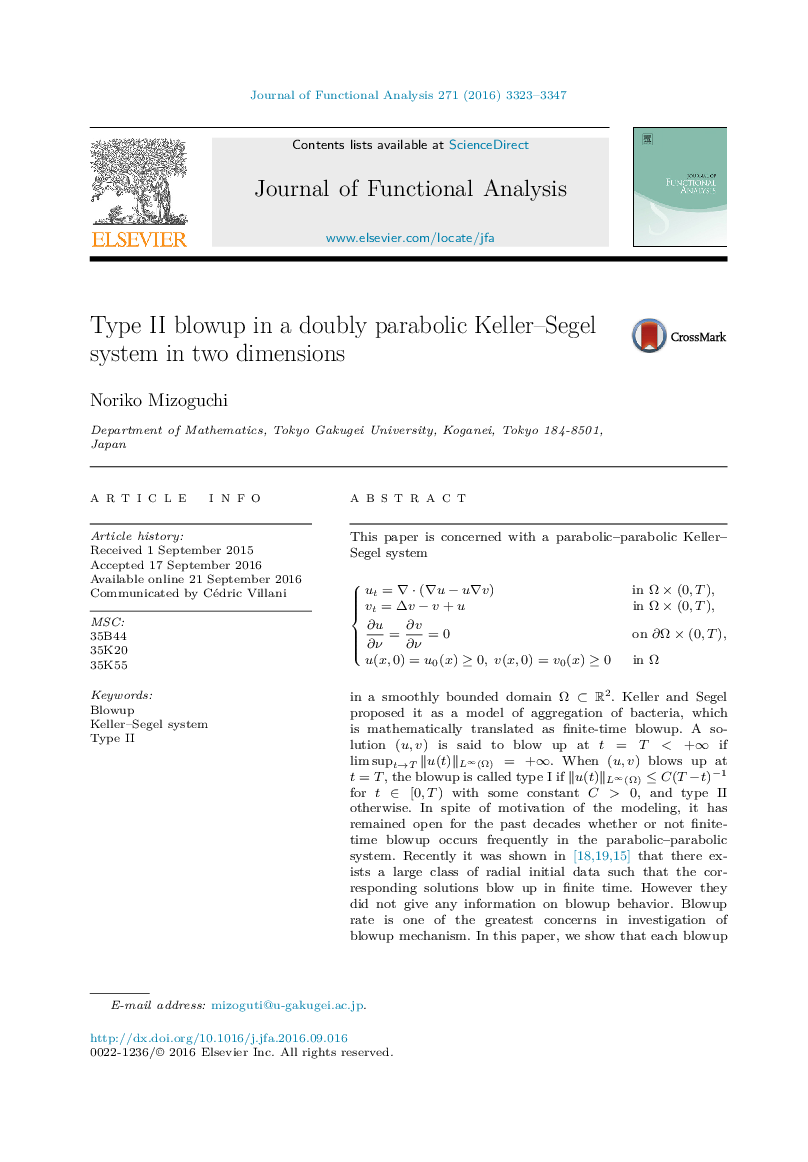| کد مقاله | کد نشریه | سال انتشار | مقاله انگلیسی | نسخه تمام متن |
|---|---|---|---|---|
| 4589550 | 1334885 | 2016 | 25 صفحه PDF | دانلود رایگان |

This paper is concerned with a parabolic–parabolic Keller–Segel system{ut=∇⋅(∇u−u∇v) in Ω×(0,T),vt=Δv−v+u in Ω×(0,T),∂u∂ν=∂v∂ν=0 on ∂Ω×(0,T),u(x,0)=u0(x)≥0,v(x,0)=v0(x)≥0 in Ω in a smoothly bounded domain Ω⊂R2Ω⊂R2. Keller and Segel proposed it as a model of aggregation of bacteria, which is mathematically translated as finite-time blowup. A solution (u,v)(u,v) is said to blow up at t=T<+∞t=T<+∞ if limsupt→T‖u(t)‖L∞(Ω)=+∞. When (u,v)(u,v) blows up at t=Tt=T, the blowup is called type I if ‖u(t)‖L∞(Ω)≤C(T−t)−1‖u(t)‖L∞(Ω)≤C(T−t)−1 for t∈[0,T)t∈[0,T) with some constant C>0C>0, and type II otherwise. In spite of motivation of the modeling, it has remained open for the past decades whether or not finite-time blowup occurs frequently in the parabolic–parabolic system. Recently it was shown in [18], [19] and [15] that there exists a large class of radial initial data such that the corresponding solutions blow up in finite time. However they did not give any information on blowup behavior. Blowup rate is one of the greatest concerns in investigation of blowup mechanism. In this paper, we show that each blowup is of type II in the parabolic–parabolic system in radial case.
Journal: Journal of Functional Analysis - Volume 271, Issue 11, 1 December 2016, Pages 3323–3347